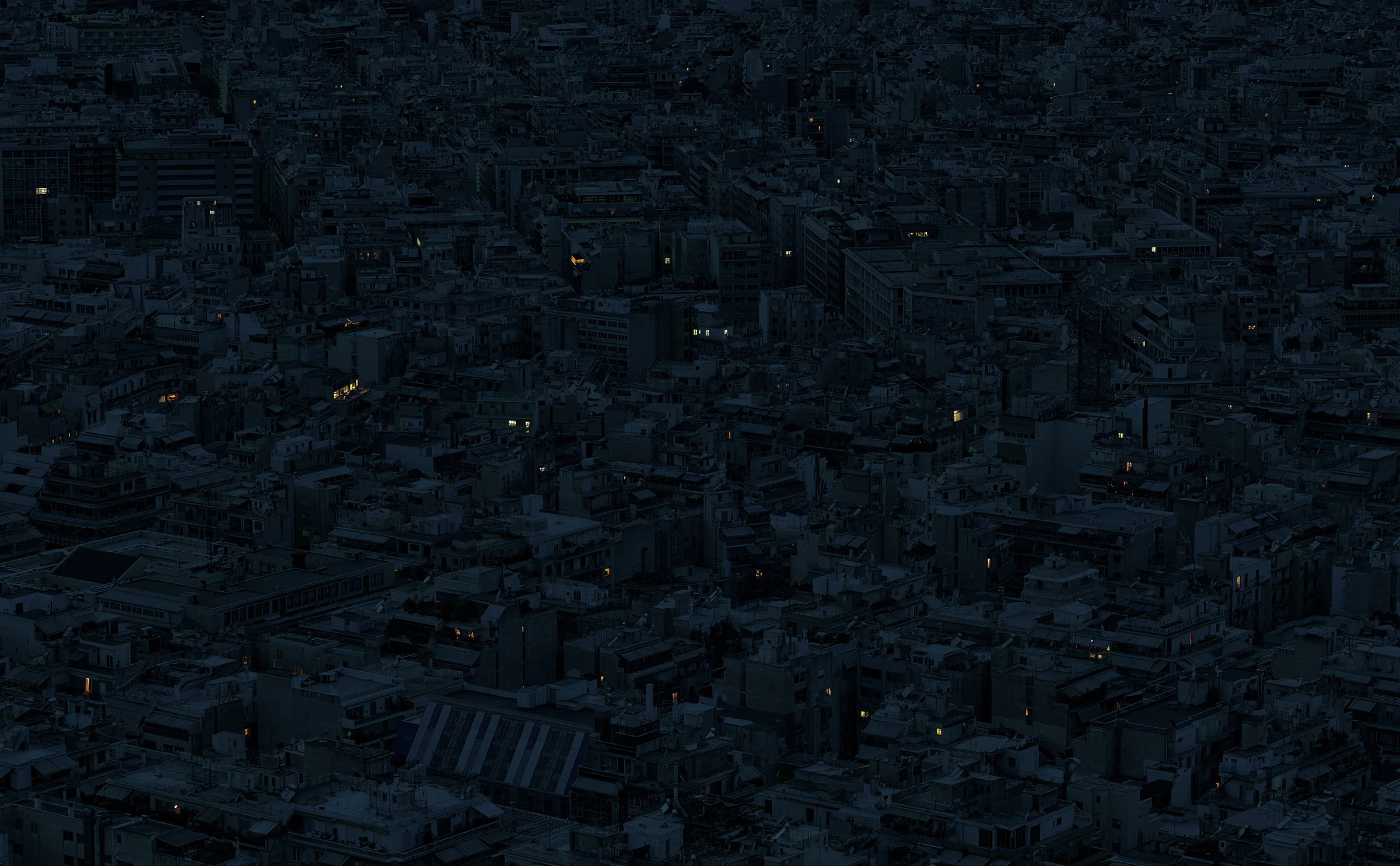Alone Together by Aristotle Roufanis
Since 2016, Aristotle Roufanis has been creating super-high-definition images of urban landscapes that are an intimate look into the lives of city-dwellers and their loneliness. The large composite images of his Alone Together series are the result of dedicated observation, as he photographs the cities he visits from dusk till dawn: after setting up his equipment on a high-rise or hill, the artist proceeds to patiently capture the city below click by click, in a process that can take several hours. In Wim Wenders’ Wings of Desire, the angels are constantly listening to the voices in the city; in Alone Together, the photographer is silently peering into the city’s concrete body with his lens as it sleeps.
“The bigger the city, the lonelier we feel”, comments Aristotle, who recently moved to London from another bustling urban centre, namely his hometown of Athens, Greece. “In a big city, we are very efficient in covering all our consumerist needs, but we forget our need for companionship. It is important for people to understand that although lonely, they are not alone. Individuality does not equal to alienation.”
Apart from it being a feat of technique and skill, the sheer size and extreme amount of detail seen in Roufanis’ images have a very particular emotional impact: they make the urban landscape clearly visible all across their surface, which is something we cannot experience when looking at a vast expanse with naked eye. That also makes the images lose their depth and become flat, like a veil that protects the tender humanness hidden behind it. It is said that Pythagoras of Samos taught his initiates from behind a black veil, so that they would focus on his teachings rather than his image. In a similar way, we need the intricate black veil of these images to help us shift our focus from how the city appears, in order to focus on what it tells— that is, to actually feel the intensity of the many soliloquies that are being spoken behind its dark walls.
To make each little light visible within the vast urban jungle, Aristotle has deployed a technique of super high-resolution photography, which is then complemented by meticulous digital editing that can take up to one month for each photo.
The images for the Alone Together series, when presented in an exhibition context, are shown in extremely high-resolution prints that are at least 160 cm and up to 5 metres wide, in order to convey as much detail as possible. This enables the viewer to explore different areas of the image, and perhaps identify with particular lights or even people seen in the photos: the resolution of the images is so high, that tiny figures can sometimes be seen standing in the windows, perhaps contemplating the city outside or doing everyday things in their home.
London, Paris, Hong Kong, Miami, Athens: for Aristotle, urban habitats and the loneliness of city dwellers are surprisingly the same wherever you go. By isolating only a few illuminated windows in each photo, the artist seeks to both raise awareness about the epidemic of urban isolation in big cities and take a positive stance about it. Composition and balance here are less about form and colour than about organization of content: which windows are kept illuminated within the sea of dark anonymous apartment buildings, and what do they contain? A sofa, a painting, a person behind a curtain: all these glimpses of an otherwise uneventful evening after work (or maybe the last excruciating minutes of a long sleepless night) are transformed into dramatic events full of emotional tension.
Cities are not fragile. They are cruel. How on earth did this unloving condition become the habitat of choice for humans? Some say that we build cities because we have always lived together and need each other’s company. But probably it’s the other way around: being close to each other is how we survive the city and its trappings in the first place. The softness of human relationships nestles within the city like when a mollusk finds shelter in a rock. And sometimes we need a kind observer to raise the mirror and show us how we live, in order to realize just how bright a lonely light can shine at night.








